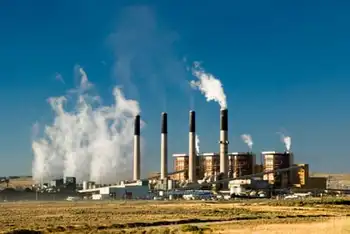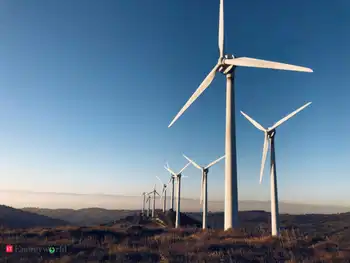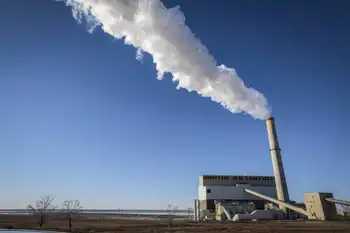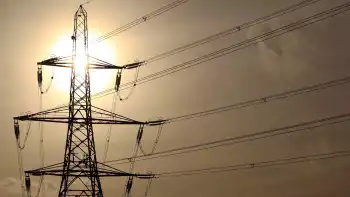Life returns to an eerie Chernobyl
They are 75, 80 and 81 years old, a trio of cackling crones who assure me – rheumy eyes crinkling with amusement – that vodka is the best antidote for radiation sickness.
They ought to know: Survivors of the worst nuclear accident in history – 400 times more radioactive fallout than the atomic bombing of Hiroshima – and living all these years since in the shadow of the sinister Chernobyl reactors, illegals in their own condemned homes.
The resettlers, they're called, reverse migrants who defied the state to take up residence again in the crumbling cottages of "black villages" located within the 30-km exclusion zone around Chernobyl, ground zero.
On their own, without a guest to impress, the ladies would be drinking samogon, a belly-burning moonshine made from fermented sugar, yeast and potatoes. But for company, they break out the good stuff, served with platters of cheese, cold cuts and dark brown bread.
The meat is from slaughtered pigs that snuffle in earth still so infused with toxins that nothing grown in this soil is permitted to be sold outside the exclusion zone, even 23 years after an accident that remains the single Level 7 incident on the International Nuclear Event Scale.
Yet the cottage gardens are lush with fruits and vegetables and flowers ablaze with colour, almost monstrous in size and vividness. For the locals, only mushrooms are considered too poisonous to be edible. Well, maybe one or two in the soup pot is okay.
"In Ukraine, it is customary to have at least three glasses of vodka," explains Valentina Kovtunko, setting her crutch aside to top everybody up for another round.
Olga Zahovna, who is stone-deaf, gasps when the visitor takes a stool at the corner of the kitchen table. "No, no, single girls are not allowed to sit in the corner chair. That means you will never marry."
Perish the thought.
Maria Shovkuta takes the guest's face in her clawlike hands and mumbles: "You remind me of someone, from long ago."
They have little beyond their memories and yet they endure, surrounded by framed photographs of children and grandchildren on the wall – relatives who are allowed to visit only one day a year because of the continuing radioactivity – their connection to the outside world a bulky radio-phone provided by the state, a bus that comes once a week for shopping trips to the bazaar in the closest "clean" town, and, jarringly in this rustic home, the flat-screen TV purchased by Kovtunko's daughter. The ladies sit around it on most evenings to watch their favourite shows while they knit.
"My children lived in Pripyat but of course they left and didn't come back," says Kovtunko, referring to the model town that the Soviets built to house workers at the Chernobyl Nuclear Power Plant, now an eerie modern-day Pompeii overrun with foliage, a tangle of trees and underbrush choking the concrete and brick, as nature reclaims its territory.
"I'm not lonely," insists Kovtunko, a former Chernobyl cleaning lady who was born nearby and moved into this house upon marriage. "I have my friends and my garden. There's so much work to do. I don't have time to get bored."
She looks fondly at her friends. "We were young together."
They are all widows. Kovtunko's husband actually died before the nuclear accident and she was loathe to leave his grave untended, just one more reason for returning; that, and her discomfort with the three-room high-rise flat outside Kyiv where authorities had placed her afterwards, a space shared with other evacuees. "Oh, the noise! I couldn't sleep. And we didn't even have a proper stove to cook on."
Upwards of 400,000 Ukrainians from around Chernobyl were evacuated and relocated in the year after the accident.
Better to come back here, Kovtunko decided, after a year living away, reunited with about 80 other elderly citizens who likewise returned to this village, Opachichi, authorities relenting because the optics of forcibly removing stubborn old folks was even worse.
"I believe that it's clean here," continues Kovtunko. "I don't think we should have ever been made to leave. Look at me – I've never been sick a day."
Officially, these villagers don't even exist. And only 14 of them are left – 13 women and one man – in Opachichi. Another nearby black village has one sole occupant, a cranky sort who achieved fame when he met with Ukraine's President Viktor Yushchenko and elicited a promise that he'd never be harassed by officials again.
What none of the Opachichi residents own is a dosimeter, the hand-held ticking Geiger counters that measure radioactivity.
"Bah, who needs it?" scoffs Kovtunko. "I'm an old lady. The radiation hasn't killed me yet. And when I die, that won't be the reason."
Her fear, an illogical paranoia, is that authorities are eyeing the region with the idea of establishing a hunting and fishing preserve, since the ecology of this contaminated environment has sprung back of its own accord, a weird post-apocalyptic biosphere rife with undisturbed wildlife: boar and lynx, the white-tailed eagle (a total newcomer), Przewalski horses, an estimated 300 wolves, birds and voles, mutantly large catfish in the Pripyat River. Some of these species had not been seen for decades. (The only "mutants" identified in Chernobyl lands have been barn swallows with partly albino faces instead of the species' typical red chins.)
While hunting and fishing are forbidden, poachers are known to bag game and sell it to restaurants in Minsk and Kyiv.
The Ukrainian government designated the exclusion zone a wildlife sanctuary in 2000, despite radiation levels up to 100 times higher than acceptable "background levels" in some hot spot locations, not all of them marked by diamond-shaped warning signs that loom like scarecrows.
A lethal exposure of radiation ranges from 300 to 500 roentgens an hour and levels around the exclusion zone vary from 15 to several hundred microroentgens. (A microroentgen is one-millionth of a roentgen.)
The risk is in long-term exposure, which is why those who continue to work at Chernobyl – including the maintenance crew at the reactor plant, officially shut down in 2000 due to international pressure – are on two-week shifts, after which they must stay outside the zone for the following two weeks. Most plant personnel live in Slavutych, built after the disaster some 50 kilometres away, arriving on a train that weaves back and forth across the Ukrainian/Belarusian border.
This district is alive with cesium, strontium, plutonium, ruthenium, hundreds of different isotopes no larger than a microdot, spewed into the atmosphere on April 26, 1986, the eruption of Reactor No. 4 caused by poor design combined with errors made by control room personnel during a testing procedure. Further explosions sent a plume of highly radioactive fallout drifting over an extensive geographical area, 130,000 square kilometres contaminated to some extent. The 12 square kilometres of evergreen woodlands that stood directly in the path of the deadliest debris immediately turned red and died. That's the "Red Forest," of which only a small portion remains, the rest buried.
Two people were killed in the initial steam explosion. According to a 2005 report by the Chernobyl Forum, 56 deaths were directly attributable to the event (47 accident workers and nine children with thyroid cancer). The World Health Organization estimates some 4,000 subsequent deaths have occurred or will arise from it, from among 600,000 people most highly exposed to the radiation. Greenpeace predicts an eventual death total of 93,000.
Cancer rates around Chernobyl are unusually high, 65 times normal according to some reports. Upwards of 4,400 Ukrainian children and adolescents have already undergone operations for thyroid cancer, the most common consequence of radiation. In neighbouring Belarus, health officials say 20 per cent of the country's 10 million people are suffering from radiation-linked ailments.
Nearly a quarter century later in this poisoned realm, the microscopic particles still adhere underfoot, which is why visitors are directed to avoid stepping on mossy patches of ground or brushing up against branches. Because dust explodes with every step, Ukraine doesn't allow any plowing or building in the zone either. No burials have been permitted in the zone since the accident and the cemeteries that were already there are sinking into wildness – sad remnants of a lost civilization. A heart-wrenching sight is a child's grave decorated with Dinky cars, now overrun with weeds.
Before they knew what they were actually doing – the wrongness of it – officials ordered much of the zone plowed under, including entire villages within the 10-kilometre radius. Equipment used in the massive cleanup operation was also interred – but not deeply – because it was too radioactive dirty to be brought out, though scavengers chopped up helicopters, trucks and construction vehicles for parts that were sold as far away as Moscow.
Decontamination, rain and the passage of time have washed off much of the radioactive grime that coated Chernobyl, though plutonium has a half-life of 25,000 years. What didn't blow away has sunk into the soil, been absorbed by plants, in turn eaten by animals, and moved on up the food chain to be part of the biological continuum.
Yet this most blighted part of the planet is so very far from a dead zone these days. With humans withdrawing, animals roam at will and the plant life is more dramatic, even if some trees have sprung strangely. As one researcher put it: "Those trees have a terrible time knowing which way is up."
Few predicted this kind of resurgence in so short a span of time. It's all still contaminated but it's abundant in the absence of human habitation, reinforcing the belief that the greatest threat to nature is man. Left to its own devices, nature finds a way to survive and thrive.
The debate about Chernobyl as Paradise Rediscovered is raging on the pages of scientific journals because the experts can't agree on what's happening and why.
Biologist Robert Baker, of Texas Tech University, was among the first to report that Chernobyl had become a wildlife haven. He has taken research teams to the region more than 30 times since the early 1990s.
"It's a fascinating and gorgeous place," Baker says in an interview. "I refer to it as a kind of aquarium for animals and plant life.
"We're of the opinion that there are, within both the 10-km and 30-km zones, more rats and mice and pigs and moose and horses and endangered species than there are outside of the zone. It's evident that human behaviour is more dangerous for that environment than radiation."
An acute radiation dose, obviously, is lethal; it kills off mammals with red blood cells. "But a chronic low dose doesn't have the same effect," Baker notes, basing his view largely on mice and rodents that, he says, have shown a remarkable tolerance for elevated radiation levels.
This not only contradicts scientists, but is heresy to the wider constituency of doomsayers who oppose nuclear energy on the grounds it is a profound safety risk and intrinsically unsound ecologically.
Baker thinks organisms can cope with the destructive effects of radiation, at least to a point, after which the damage becomes irreparable and the species might die out, with domino impacts.
A strong argument was also made for nature in balance with radiation by journalist Mary Mycio in her authoritative book, Wormwood Forest: A Natural History of Chernobyl. During her research, she made a complete U-turn on both the value of nuclear power and the assessment of Chernobyl.
"Contrary to the myths and imagery, Chernobyl's lands had become a unique, new ecosystem," she wrote. "Defying the gloomiest predictions, it had come back to life as Europe's largest nature sanctuary, teeming with wildlife. Like the forests, fields and swamps of their unexpectedly inviting habitat, the animals are all radioactive. To the astonishment of just about everyone, they are also thriving."
A starkly different view is put forth by the likes of Timothy Mousseau, a Canadian-trained biologist at the University of South Carolina. He has called Chernobyl a "sink," where animals migrate because there are so few humans around but then struggle to build new populations, rapidly dying off.
A high proportion of the birds he and his colleagues examined suffer from radiation-induced sickness and genetic damage. Mousseau's study, published in March, said populations of bumblebees, butterflies, spiders, grasshoppers and other invertebrates were low in the most contaminated areas and barn swallows – only a third of which are reproducing – have a high rate of genetic abnormalities. Scientists worry mutated birds will pass on their abnormal genes to the global population.
Mousseau has now started work on a long-term study of humans who live in the area, a study involving more than 11,000 adults and 2,000 children.
Back at Chernobyl, Reactor No. 4 is now buttressed and entombed in 10 storeys of lead-and-steel shielding, known as the sarcophagus, soon to be replaced with an even sturdier protective shell. From the Bridge of Death – its clear sightlines drew residents to watch the fireworks the night of the accident, exposing them to an uninterrupted stream of radiation – plant workers now toss breadcrumbs to giant catfish in the Pripyat River.
Near to the quartet of reactors is a spent fuel processing plant built by a French company and never used because control rods from the Chernobyl reactors don't fit into the machinery. Spent fuel is hot and there's no safe way to get rid of it.
Close by, but a world away from all the controversy and conflicting research, the women of Opachichi get on with their small, tranquil lives, a very particular species that's also dying off.
But then Kovtunko tells the story of Maria, the only child born in Chernobyl since the disaster, her parents the youngest of the returnees.
When the couple later divorced, Maria and her mother stayed put. Now 12 years old, Maria lives at a boarding school outside Kyiv but comes back on weekends, happily visiting with elders, bringing a child's laughter to these eerily quiet villages.
Says Kovtunko: "She belongs to all of us."
Related News

18% of electricity generated in Canada in 2019 came from fossil fuels
CALGARY - California recently announced that it plans to ban the sales of gas-powered vehicles by 2035, Ontario has invested $500 million in the production of electric vehicles (EVs) and Tesla is quickly becoming the world's highest-valued car company.
It almost seems like owning an electric vehicle is a silver bullet in the fight against climate change, but it isn't. What we should also be focused on is whether anyone should use a private vehicle at all.
As a researcher in sustainable mobility, I know this answer is unsatisfying. But this is where my latest research has led.
Battery EVs, such…




